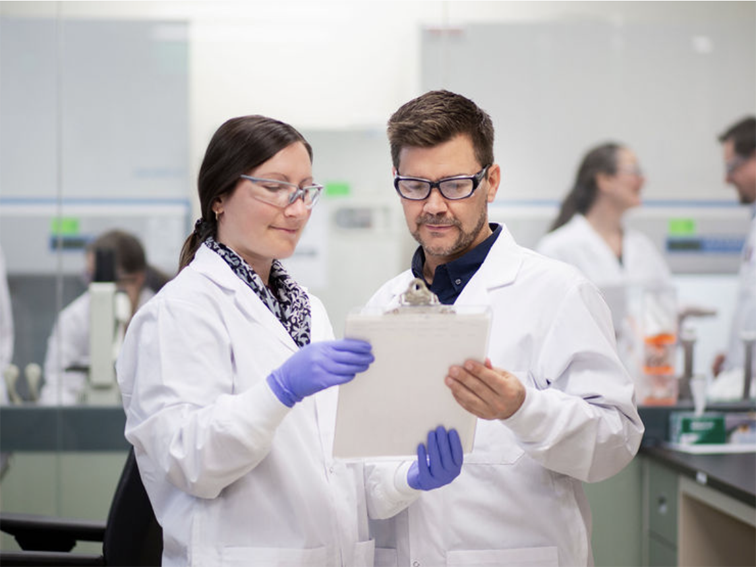Proper forethought, from candidate screening to simplified processing, will improve the likelihood of both clinical and manufacturing success with this promising new category of powerful agents.
Manufacturers can add value for customers by partnering with a CRO or providing in-house capabilities to help them evaluate developability and perform appropriate functionality testing with a focus on immunogenicity.
The pharmaceutical industry is embracing the promise of multispecific antibodies with enthusiasm. The global bispecific antibody market has more than 300 products in the pipeline. Before this rapidly expanding array of novel formats can deliver a windfall of blockbuster therapies, however, researchers must overcome substantial hurdles.
If monoclonal antibody (mAb) development and manufacture are challenging, the processes for bispecific antibodies are exponentially more so. To improve the chance of success, some mAb manufacturers assist customers with early development or team up with laboratories such as ours to increase the likelihood of success.
This offers small to mid-size pharmaceutical and biotech companies without internal resources a way to reduce risk and ensure the candidate they advance is efficacious and developable with low immunogenicity for the best chance of downstream success.
What are bispecific antibodies?
Bispecific antibodies are a class of therapeutics that target two different epitopes simultaneously with the goal of increasing therapeutic impact. These binding sites may be on the same antigen or on two different antigens.
Although the most common and most stable format of these molecules resembles natural IgGs, other formats that mimic antibody functionality are also in development.
These include variants such as single-chain variable fragments (scFv), which connect the variable, antigen-recognising regions of heavy and light chains with a short linker peptide. As these smaller variants present more unrecognisable surfaces to the immune system, they tend to have shorter lifespans in the circulation compared with IgG-like formats.

The benefits of bispecific antibodies
Bispecific antibodies provide a variety of potential functional advantages compared with standard mAbs. They may increase antibody efficacy by targeting more than one aspect of a disease.
Or, they may act as a link, bringing two molecules together, such as a tumour cell and a cytotoxic T lymphocyte, for more targeted tumour cell killing. Examples of novel mechanisms of action include
- effector cell recruitment
- simultaneous effects in two disease pathways
- transport of mAbs across the blood-brain barrier
- increasing Ab-drug conjugate intake into cells
- forced interaction of membrane proteins, mimicking other processes
- tissue-specific drug delivery, reducing systemic effects.
These are just some of the possibilities. However, not all mechanisms of action are that different from traditional mAbs.
Preclinical investigation improves bispecific candidate selection by gauging risk
Early product characterisation to support candidate selection is important for all biologics; but, in the case of bispecifics, it’s essential.
Considering effector function, developability, potency and immunogenicity during lead selection can prevent costly errors and disrupted timelines that may not manifest until the clinical or commercial manufacturing stage.
The ultimate goal of product characterisation is to optimise production, anticipate and prevent adverse clinical outcomes, and ensure that the product has suitable attributes for its intended use. Customers look for robust capabilities to help them with risk assessment and to improve the likelihood of success throughout their product’s lifecycle.
Considering developability early helps to ensure viable downstream processes
As work with bispecific antibodies continues, engineering solutions to produce these molecules advance. The result is that a greater variety of molecules have been available for testing.
However, in every case, developers should remember that any engineering steps must be compatible with industrial production. As with all biotherapeutics, other attributes and considerations critical to successful downstream production and performance include
- a clone that expresses at high concentrations
- cost-saving production methods
- uncomplicated purification steps
- chemical and physical stability
- steps to overcome instability (in the case of fragments)
- characterisation of both product and potential contaminants and understanding of how difficult it will be to differentiate between them
- complexity of post-production modifications
- effect of modifications on stability or other critical attributes.
Considerations such as these must be addressed from the outset of development to ensure a physically and financially viable product.
Functional tests to evaluate the potency and functionality of bispecifics
In the discovery phase, a bispecific antibody’s potency can be evaluated using in vitro cellular assays with primary cells and tumour cells representing the complex mode of action.
To evaluate the activity of the T-cell-dependent bispecific antibodies that bind T cells (via the CD3 arm) to the target cells (via the cell surface receptor-binding arm), an in vitro killing assay can be used.
In these assays, primary pan-T cells from healthy donors are mixed with tumour antigen expressing cell lines in the presence of increasing amounts of the test bispecific molecule.
With novel technologies such as live-cell analyser Incucyte, tumour cell death is measured directly and in real-time by adding mix-and-read fluorescent reagents. This method enables the developer to calculate and compare the relative potency of different candidate therapeutics.
T-cell-engaging bispecific antibodies in combination with checkpoint inhibitors, particularly anti-PD-1/PD-L1 antibodies, show promise for the treatment of the so-called cold or non-inflamed tumours that lack antigen-specific T cells.

The checkpoint blocking activity can be evaluated in vitro using mixed lymphocyte proliferation assays or CMV-reactivation assays. In these assays, cells from healthy donors are activated in vitro in the presence of the test bispecifics or monoclonals.
The checkpoint blocking activity is then measured via analysis of proliferation or cytokine production and can be translated into a potency value. These techniques can be used to aid candidate selection.
Immunogenicity is a key hurdle in bispecific antibody development
A high proportion of bispecific antibodies entering early phase development turn out to be immunogenic. Inducing an undesired immune response or immunotoxic effect is to be avoided. Antidrug antibodies can result in reduced potency and efficacy and may pose safety risks.
This likelihood is disproportionately higher with bispecific antibodies than with mAbs. The factors that determine immunogenicity are varied but, fundamentally, the less homologous the proteins are with native proteins, the more likely they are to present a T-cell epitope and trigger an immune response.
Therefore, the more highly engineered and modified a bispecific is, the greater the risk of immunogenicity and aggregation. Several tools are available to assess this immunogenic potential during development. In silico T-cell epitope prediction algorithms can help to determine the immunogenic risk based on predicted binding.
In vitro assays, such as T-cell proliferation assays and dendritic cell activation assays, can also be used to assess the immunogenic risk. In these assays, primary T cells or dendritic cells from healthy human volunteers (representative of the population of interest) are incubated with the test molecules or peptides.
In vitro proliferation, cytokine production or activation and maturation markers are measured via flow cytometry or other technologies, such as ELIspot.
Analysis of these in vitro responses allows a relative ranking of the bispecific candidates and identifies those with high potential for inducing an unwanted immune response in patients. The risk of inducing immunotoxicity effects can be evaluated using a whole blood cytokine release assay.
Early consideration of developability, functionality and immunogenicity help to derisk bispecific manufacturing
An early stage commitment to comprehensive product characterisation greatly reduces risk in bispecific antibody programmes, from clone selection to the development of an optimal manufacturing process. In-depth understanding of product and process design ensures that the required safety, purity, identity and potency profiles are achieved.
Manufacturers can derisk projects by ensuring that their clients’ bispecific candidates have undergone a rigorous selection process. Biopharmaceutical companies today may lack the resources to accomplish this on their own.
Offering corresponding capabilities in-house or partnering with a CRO such as Nexelis that can evaluate developability and perform appropriate functionality testing with a focus on immunogenicity provides an opportunity to add value.
Bispecific antibodies represent a broad new category of powerful agents with untapped financial and life-enhancing potential. Proper forethought and candidate screening will improve the likelihood of both clinical and manufacturing success.
Bibliography
- www.kuickresearch.com/report-global-usa-europe-japan-bispecific-antibody-antibodies-therapeutics-therapy-market-sales-size--trends-clinical-trials-emicizumab-hemlibra-blincyto--blinatumomab-sales.
- B. Husain and D. Ellerman, “Expanding the Boundaries of Biotherapeutics with Bispecific Antibodies,” BioDrugs 32, 441–464 (2018).
- A. Fiona, et al., “The Immunogenicity of Humanized and Fully Human Antibodies,” mAbs 2(3), 256-265 (2010).




